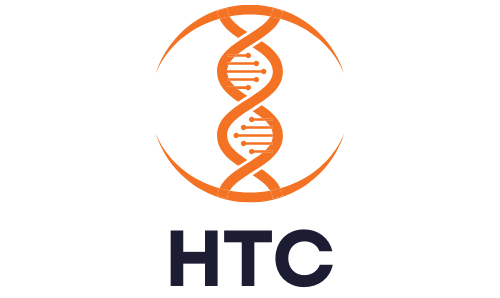Investing in Biotech: Beyond Traditional Pharmaceuticals
The biotech sector has emerged as a powerhouse of innovation and growth, consistently drawing the attention of investors seeking high returns and groundbreaking advancements. Traditionally, pharmaceuticals have dominated the biotech landscape, but the sector's scope extends far beyond these conventional boundaries. With rapid technological advancements and increasing demands for personalized and precision medicine, a myriad of opportunities awaits discerning investors who are ready to explore the broader horizons of biotech.
The importance of looking beyond traditional pharmaceuticals cannot be overstated. While pharmaceuticals remain a cornerstone of the biotech industry, focusing solely on them means potentially missing out on revolutionary developments in areas like gene therapy, regenerative medicine, and digital health. These fields not only promise substantial financial returns but also represent the future of healthcare, aiming to provide more effective, targeted, and personalized treatments.
This blog aims to shed light on the diverse investment opportunities within the biotech sector. By delving into various emerging fields and technologies, we hope to provide a comprehensive overview that highlights the potential for growth and innovation beyond traditional pharmaceuticals. Whether you are a seasoned investor or new to the biotech landscape, understanding these opportunities is crucial for making informed investment decisions and capitalizing on the sector's dynamic evolution.
The Biotech Landscape
The term "biotech" encompasses a broad array of technologies and applications, all unified by their reliance on biological processes to develop products and solutions. At its core, biotech involves the manipulation of living organisms or their components to create medical, agricultural, industrial, or environmental advancements. This expansive scope allows for innovation across multiple domains, leading to groundbreaking developments that can transform industries and improve lives.
Key Areas of Innovation
- Genomics: Genomics is the study of genomes, the complete set of DNA within an organism. Advances in genomic technologies have paved the way for personalized medicine, allowing treatments to be tailored to an individual's genetic makeup. This area holds immense promise for identifying genetic predispositions to diseases, developing targeted therapies, and improving diagnostic accuracy.
- Bioinformatics: Bioinformatics combines biology, computer science, and information technology to analyze and interpret biological data. The ability to manage and analyze large datasets is crucial for understanding complex biological systems, identifying potential drug targets, and accelerating the discovery of new therapies.
- Regenerative Medicine: Regenerative medicine focuses on repairing or replacing damaged tissues and organs using techniques like stem cell therapy and tissue engineering. This field aims to restore normal function in patients with chronic diseases or severe injuries, offering hope for treatments that go beyond symptom management to true healing.
- Synthetic Biology: Synthetic biology involves redesigning organisms for useful purposes by engineering them to have new abilities. This can include the development of biofuels, biodegradable materials, and new pharmaceuticals. The potential applications of synthetic biology are vast, ranging from environmental sustainability to advanced medical treatments.
- Immunotherapy: Immunotherapy harnesses the power of the immune system to fight diseases, particularly cancer. This approach includes treatments like checkpoint inhibitors and CAR-T cell therapy, which have shown remarkable success in treating certain types of cancer by boosting the body's natural defenses.
Differences Between Biotech and Traditional Pharmaceuticals
While traditional pharmaceuticals primarily focus on the chemical synthesis of drugs to treat diseases, biotech represents a paradigm shift towards leveraging biological systems and processes. Here are some key distinctions:
- Innovation Sources: Traditional pharmaceuticals often rely on chemical compounds discovered through synthetic chemistry, whereas biotech innovations frequently stem from understanding and manipulating biological systems, such as genes, proteins, and cells.
- Development Processes: The development of biotech products typically involves cutting-edge technologies like CRISPR for gene editing, high-throughput sequencing for genomics, and advanced computing for bioinformatics. In contrast, traditional pharmaceutical development often follows well-established chemical processes.
- Product Types: Biotech products can include a wide range of therapies and solutions, such as gene therapies, monoclonal antibodies, vaccines, and engineered tissues. Traditional pharmaceuticals are usually limited to small-molecule drugs.
- Personalization: Biotech has significantly advanced the concept of personalized medicine, where treatments are tailored to individual genetic profiles. Traditional pharmaceuticals generally follow a one-size-fits-all approach, which may not be as effective for all patients.
- Regulatory Pathways: The regulatory pathways for biotech products can be more complex and varied, given the novel and diverse nature of these therapies. Traditional pharmaceuticals follow more standardized regulatory processes, though both fields face rigorous scrutiny to ensure safety and efficacy.
Emerging Biotech Sectors
The biotech industry is a fertile ground for innovation, with several sectors standing out for their transformative potential and investment appeal. Let's explore some of the most promising biotech sectors, alongside case studies of leading companies driving growth and innovation in these areas.
Gene Therapy
Gene therapy aims to treat or prevent diseases by modifying the genetic material within a person's cells. This approach holds promise for curing genetic disorders and some cancers, offering potential one-time treatments for conditions that currently require lifelong management.
- Case Study: Spark Therapeutics
- Spark Therapeutics, acquired by Roche, is a pioneer in gene therapy. Their breakthrough product, Luxturna, is the first FDA-approved gene therapy for a genetic disease, targeting a rare form of inherited blindness. This success not only validated the potential of gene therapy but also set the stage for further advancements in treating other genetic conditions.
Personalized Medicine
Personalized medicine leverages genomic information to tailor treatments to individual patients, improving efficacy and reducing adverse effects. This sector is revolutionizing how we approach diseases, particularly in oncology.
- Case Study: Foundation Medicine
- Foundation Medicine, now part of Roche, specializes in comprehensive genomic profiling. Their tests identify genetic mutations in cancer patients, guiding personalized treatment plans. By enabling precision oncology, Foundation Medicine exemplifies how personalized medicine can lead to better patient outcomes and more efficient healthcare delivery.
Regenerative Medicine
Regenerative medicine focuses on repairing or replacing damaged tissues and organs. Techniques such as stem cell therapy and tissue engineering aim to restore normal function in patients with chronic conditions or severe injuries.
- Case Study: Athersys
- Athersys is a leader in regenerative medicine, particularly known for their MultiStem cell therapy. This allogeneic stem cell product is being developed for various indications, including stroke and acute respiratory distress syndrome. MultiStem's potential to address unmet medical needs highlights the transformative impact of regenerative medicine.
Bioinformatics
Bioinformatics combines biology, computer science, and information technology to analyze and interpret biological data. It is critical for managing and understanding the vast amounts of data generated by genomic research and other biological studies.
- Case Study: Illumina
- Illumina is a global leader in sequencing and array-based solutions for genetic analysis. Their bioinformatics tools enable the interpretation of complex genomic data, facilitating breakthroughs in research and clinical applications. Illumina's technologies are foundational to many advancements in genomics and personalized medicine.
Synthetic Biology
Synthetic biology involves redesigning organisms to perform specific tasks, such as producing biofuels or developing new medical therapies. This field combines biology and engineering principles to create innovative solutions across various industries.
- Case Study: Ginkgo Bioworks
- Ginkgo Bioworks uses synthetic biology to engineer microorganisms for diverse applications, including pharmaceuticals, agriculture, and industrial chemicals. Their platform accelerates the design, development, and production of custom organisms, showcasing the broad potential of synthetic biology to drive innovation.
Immunotherapy
Immunotherapy harnesses the immune system to fight diseases, particularly cancer. Treatments like checkpoint inhibitors and CAR-T cell therapy have shown remarkable success in treating certain cancers by enhancing the body's natural defenses.
- Case Study: Kite Pharma
- Kite Pharma, acquired by Gilead Sciences, is at the forefront of immunotherapy. Their CAR-T cell therapy, Yescarta, has been approved for treating certain types of lymphoma. Kite's advancements in immunotherapy illustrate the sector's potential to revolutionize cancer treatment.
Potential for Growth and Innovation
The potential for growth and innovation in these biotech sectors is immense. As technologies advance and our understanding of biological systems deepens, the opportunities for developing new treatments and solutions expand exponentially. Investors who recognize the promise of these emerging sectors and strategically allocate their resources can benefit from the rapid evolution and growth of the biotech industry.
Moreover, the intersection of these fields—such as the application of bioinformatics in personalized medicine or the use of synthetic biology in regenerative therapies—further amplifies their transformative potential. By staying informed about the latest developments and supporting pioneering companies, investors can contribute to and profit from the next wave of biotech innovations.
Investment Strategies in Biotech
Investing in biotech offers exciting opportunities, but it also comes with its unique set of challenges and risks. To navigate this dynamic sector successfully, investors need to adopt informed and strategic approaches. Here are some key strategies to consider:
Identifying High-Potential Biotech Startups
- Scientific and Technological Merit: Assess the underlying science and technology of the startup. Look for companies with strong intellectual property, robust research and development pipelines, and innovations that address significant unmet medical needs.
- Leadership and Expertise: Evaluate the leadership team’s expertise and track record. Experienced leaders with a background in biotech, pharmaceuticals, and successful startups are more likely to steer their companies towards success.
- Clinical and Regulatory Progress: Examine the company’s progress in clinical trials and regulatory approvals. Startups with promising clinical data and clear pathways to regulatory approval are more likely to attract investment and partnerships.
- Strategic Partnerships: Consider startups that have established partnerships with larger pharmaceutical companies, research institutions, or government agencies. These collaborations can provide crucial funding, resources, and validation.
- Market Potential: Analyze the target market size and the startup's competitive positioning. Companies addressing large, underserved markets or pioneering new therapeutic areas have higher growth potential.
Diversification and Risk Management
- Diversified Portfolio: Spread your investments across various biotech sectors and companies to mitigate risk. Diversification reduces the impact of any single company’s failure on your overall portfolio and increases the likelihood of benefiting from successful ventures.
- Stage of Development: Invest in companies at different stages of development, from early-stage startups to more established companies with products in the market. This approach balances the high risk and high reward of early-stage investments with the stability of more mature companies.
- Due Diligence: Conduct thorough due diligence before investing. This includes analyzing the company’s financial health, competitive landscape, intellectual property, and clinical trial data. Engage with industry experts and consultants to gain deeper insights.
- Risk Mitigation Tools: Utilize financial instruments such as options and convertible securities to manage risk. These tools can provide downside protection while allowing for upside participation.
Long-Term vs. Short-Term Investment Strategies
- Long-Term Investments:
- R&D and Innovation: Biotech companies often require substantial time to develop and commercialize new therapies. Long-term investments are suitable for companies with promising R&D pipelines and the potential for significant breakthroughs.
- Patience and Value Creation: Long-term investors benefit from the compounding value of successful product development, regulatory approvals, and market penetration. This strategy requires patience and a focus on the company’s long-term value creation.
- Short-Term Investments:
- Event-Driven Opportunities: Short-term strategies can capitalize on specific events, such as clinical trial results, regulatory approvals, or strategic partnerships. These events can lead to rapid stock price appreciation.
- Market Sentiment: Short-term investors may also leverage market sentiment and trends, such as increased interest in a particular therapeutic area or advancements in technology that spur sector-wide growth.
- Volatility Management: The biotech sector is known for its volatility. Short-term investors should be prepared for rapid changes in stock prices and have strategies in place for quick entry and exit to maximize gains and minimize losses.
Regulatory and Market Challenges
The biotech sector is rife with potential, but it also faces significant regulatory and market challenges that investors must understand and navigate. Recognizing these hurdles and developing strategies to overcome them is crucial for success in this high-stakes industry.
Regulatory Hurdles in the Biotech Sector
- Lengthy Approval Processes: Biotech products, especially new drugs and therapies, undergo rigorous testing and approval processes by regulatory bodies such as the FDA and EMA. This can be time-consuming and costly, often taking several years to complete.
- Stringent Safety and Efficacy Requirements: Regulatory agencies have stringent requirements for demonstrating the safety and efficacy of new biotech products. Companies must provide extensive clinical trial data, which requires substantial investment and time.
- Changing Regulations: The regulatory landscape for biotech is continually evolving. Changes in guidelines, approval processes, or regulatory standards can impact development timelines and costs, introducing uncertainty and risk.
Market Competition and Technology Adoption Barriers
- Intense Competition: The biotech sector is highly competitive, with numerous companies vying to develop similar products or therapies. This competition can drive up costs, reduce market share, and impact pricing strategies.
- Technology Adoption: While biotech innovations can offer significant advantages, their adoption in clinical practice and by healthcare providers can be slow. Factors such as the need for specialized training, integration with existing systems, and cost considerations can hinder widespread adoption.
- Reimbursement and Market Access: Gaining reimbursement from insurance companies and access to markets is a critical hurdle. Even if a biotech product is approved, securing favorable reimbursement terms can be challenging, impacting the product's commercial success.
Strategies for Overcoming These Challenges
- Early Engagement with Regulators: Companies should engage with regulatory agencies early in the development process to understand requirements, seek guidance, and align their clinical trial designs with regulatory expectations. This proactive approach can help streamline the approval process.
- Strong Clinical Trial Design: Investing in robust and well-designed clinical trials is essential. High-quality data that clearly demonstrates a product's safety and efficacy can expedite regulatory approval and build confidence among investors and stakeholders.
- Strategic Partnerships: Forming partnerships with established pharmaceutical companies, academic institutions, or contract research organizations can provide valuable resources, expertise, and credibility. These collaborations can help navigate regulatory challenges and accelerate product development.
- Market Education and Advocacy: Educating healthcare providers, payers, and patients about the benefits of new biotech products is crucial for driving adoption. Companies should invest in marketing, education campaigns, and advocacy efforts to build awareness and support for their innovations.
- Diversification of Risk: Investors can mitigate regulatory and market risks by diversifying their portfolios across multiple biotech companies and sectors. This strategy spreads risk and increases the chances of benefiting from successful developments.
- Focus on Unmet Needs: Companies that target areas with significant unmet medical needs may face less competition and gain faster regulatory approval. Addressing critical gaps in treatment can also improve the likelihood of securing reimbursement and market access.
- Adaptive Business Models: Adopting flexible and adaptive business models can help companies navigate changing regulations and market dynamics. This includes being prepared to pivot development strategies, explore alternative revenue streams, and adjust to new market conditions.
Case Studies of Successful Biotech Investments
Investing in biotech can yield impressive returns, as evidenced by several notable companies that have achieved remarkable growth and success. These case studies highlight the factors that contribute to their success and offer valuable lessons for investors.
1. Spark Therapeutics
- Overview: Spark Therapeutics, a pioneer in gene therapy, developed Luxturna, the first FDA-approved gene therapy for a genetic disease. The company was acquired by Roche for $4.3 billion, underscoring the value of its innovative approach.
- Growth Factors: Spark’s success was driven by groundbreaking science, a strong IP portfolio, and strategic partnerships. Their focus on addressing a significant unmet medical need (inherited blindness) positioned them well in the market.
- Lessons Learned: Early investment in cutting-edge technology and a clear pathway to regulatory approval can lead to substantial returns. Partnering with larger pharmaceutical companies can provide essential resources and validation.
2. Foundation Medicine
- Overview: Foundation Medicine specializes in comprehensive genomic profiling, helping to advance precision oncology. Acquired by Roche for $2.4 billion, the company’s technologies are integral to personalized cancer treatments.
- Growth Factors: Foundation Medicine’s integration of bioinformatics and genomics enabled them to provide actionable insights for cancer treatment, a rapidly growing field. Their strong clinical data and collaborations with oncologists and researchers drove adoption.
- Lessons Learned: Combining innovative technologies with practical applications in patient care can create significant market value. Building strong relationships with key stakeholders is essential for market penetration.
3. Illumina
- Overview: Illumina is a leader in sequencing and array-based solutions for genetic analysis. Their technologies have revolutionized genomic research and clinical applications, driving the company’s significant market growth.
- Growth Factors: Illumina’s continuous innovation in sequencing technologies and bioinformatics tools kept them at the forefront of the genomics field. Their strategic acquisitions and partnerships expanded their market reach and capabilities.
- Lessons Learned: Investing in companies that prioritize innovation and maintain a competitive edge through technology advancements can result in long-term growth. Diversifying product offerings to meet various market needs enhances resilience.
4. Kite Pharma
- Overview: Kite Pharma, acquired by Gilead Sciences for $11.9 billion, is a leader in CAR-T cell therapy. Their immunotherapy treatments have shown significant success in treating certain types of lymphoma.
- Growth Factors: Kite Pharma’s strong clinical trial results and the transformative potential of their CAR-T therapy attracted significant investor interest. Their focused approach on a specific therapeutic area allowed them to excel.
- Lessons Learned: Specializing in a high-impact area of biotech, such as immunotherapy, can lead to substantial investment returns. Robust clinical data and clear therapeutic benefits are critical for success.
5. Notable Labs
- Overview: Notable Labs is at the forefront of precision medicine, leveraging advanced technologies to predict patient outcomes and personalize treatments. Their innovative approach has garnered attention and investment within the biotech community.
- Growth Factors: Notable Labs’ unique platform integrates real-world evidence and cutting-edge technology to improve clinical trial success rates and treatment efficacy. Their collaborations with leading research institutions and pharmaceutical companies enhance their credibility and reach.
- Lessons Learned: Emphasizing precision medicine and leveraging real-world data can significantly enhance the effectiveness of biotech solutions. Building strong partnerships and focusing on patient-centric approaches can drive growth and investor confidence.
Impact of Regulatory Changes on Biotech Investments
Regulatory changes can profoundly impact biotech investments, influencing everything from development timelines to market access. Here are some key considerations:
- Accelerated Approval Pathways: Programs like the FDA’s Breakthrough Therapy Designation and Fast Track can expedite the development and review of new therapies, benefiting companies with promising products. Investors should look for companies that leverage these pathways to reduce time to market.
- Evolving Safety Standards: Changes in safety and efficacy requirements can impact clinical trial designs and approval processes. Staying informed about regulatory trends and aligning investments with companies that prioritize compliance is essential.
- Global Regulatory Landscape: Biotech companies often seek approvals in multiple markets. Understanding the regulatory environments of different regions and investing in companies with global strategies can enhance growth prospects.
- Policy and Reimbursement Changes: Policies affecting drug pricing and reimbursement can influence the commercial success of biotech products. Companies that proactively engage with payers and policymakers to secure favorable terms are better positioned for success.
Future Trends in Biotech Investments
The biotech sector is poised for continued growth and transformation, driven by technological advancements and emerging trends. Investors who stay ahead of these trends and adapt their strategies accordingly will be well-positioned to capitalize on the opportunities that lie ahead. Here are some key trends and predictions for the future of biotech investments.
Emerging Trends and Future Directions in Biotech
- Advanced Genomics and CRISPR Technology: Genomic research is advancing rapidly, with CRISPR technology at the forefront of genetic editing. This trend is expected to lead to new therapies for genetic disorders, more precise cancer treatments, and potentially even the eradication of certain hereditary diseases. Investments in companies leveraging CRISPR and other advanced genomic technologies are likely to yield high returns.
- Artificial Intelligence and Machine Learning: AI and machine learning are revolutionizing biotech by enhancing drug discovery, predicting patient outcomes, and optimizing clinical trials. Companies that integrate AI into their processes are accelerating innovation and improving efficiency, making them attractive investment targets.
- Regenerative Medicine and Stem Cell Therapy: Regenerative medicine, particularly stem cell therapy, is progressing towards mainstream adoption. The ability to repair or replace damaged tissues and organs opens up new treatment possibilities for chronic diseases and injuries. Investing in companies pioneering these therapies could lead to significant breakthroughs and returns.
- Digital Health and Telemedicine: The integration of digital health tools and telemedicine is expanding access to healthcare and personalizing patient care. Wearable devices, remote monitoring, and telehealth platforms are becoming essential components of healthcare delivery. Investors should consider companies that are at the intersection of biotech and digital health.
- Microbiome Research: Understanding the human microbiome and its role in health and disease is a growing field. Therapies targeting the microbiome are being developed for a range of conditions, from gastrointestinal disorders to mental health issues. This emerging area presents new opportunities for investment.
The Impact of Technological Advancements on Investment Strategies
Technological advancements are reshaping the biotech landscape, influencing how investors approach the sector. Here are some ways these advancements impact investment strategies:
- Data-Driven Decision Making: Access to large datasets and advanced analytics enables more informed investment decisions. Investors can use AI and machine learning tools to analyze market trends, predict company performance, and identify high-potential opportunities.
- Accelerated Development Cycles: Technologies like AI and CRISPR are speeding up the drug discovery and development process. Investors can expect shorter timelines from research to market, reducing the time to realize returns on investments.
- Increased Collaboration: Technology facilitates collaboration across the biotech ecosystem, including partnerships between startups, established companies, academic institutions, and regulatory bodies. Investing in companies that foster strong collaborations can enhance innovation and market success.
- Personalized Investment Approaches: Just as medicine is becoming more personalized, investment strategies can also be tailored to specific technological niches within biotech. Focusing on specialized areas, such as AI-driven drug discovery or regenerative medicine, allows for targeted and potentially more lucrative investments.
Predictions for the Next Decade in Biotech Investments
- Growth in Precision Medicine: The precision medicine market is expected to expand significantly, driven by advancements in genomics, personalized therapies, and data analytics. Investments in companies focusing on precision medicine will likely see substantial growth.
- Expansion of Cell and Gene Therapies: Cell and gene therapies will become more prevalent, with numerous treatments reaching the market. Companies that successfully navigate regulatory pathways and demonstrate clinical efficacy will attract significant investment.
- Dominance of Digital Health: Digital health technologies, including telemedicine, remote monitoring, and AI-driven diagnostics, will become integral to healthcare. Investment in this sector will continue to grow as these technologies enhance patient care and reduce healthcare costs.
- Focus on Rare Diseases: The development of therapies for rare diseases will increase, supported by regulatory incentives and advances in biotechnology. Investing in companies targeting rare diseases can yield high returns due to the high unmet need and potential for premium pricing.
- Sustainability and Environmental Impact: Biotech innovations will also address global challenges such as sustainability and environmental impact. Companies developing bio-based materials, alternative energy sources, and environmentally friendly agricultural practices will attract investment.
- Globalization of Biotech: The biotech sector will become more global, with significant growth in emerging markets. Investors should look for opportunities beyond traditional markets, as regions like Asia and Latin America increase their biotech capabilities and demand.
Recap of key points discussed
Investing in biotech offers immense potential beyond traditional pharmaceuticals, encompassing a wide array of innovations and technologies. Here's a recap of the key points discussed:
- The Biotech Landscape: Biotech goes beyond pharmaceuticals, including fields like genomics, bioinformatics, regenerative medicine, synthetic biology, and immunotherapy. These areas offer diverse investment opportunities driven by cutting-edge technologies and significant unmet medical needs.
- Emerging Biotech Sectors: Gene therapy, personalized medicine, regenerative medicine, bioinformatics, synthetic biology, and immunotherapy are at the forefront of biotech innovation. Case studies of companies like Spark Therapeutics, Foundation Medicine, Illumina, Kite Pharma, and Notable Labs highlight successful investments and growth factors.
- Investment Strategies in Biotech: Identifying high-potential startups, diversifying portfolios, managing risk, and balancing long-term and short-term investment strategies are essential for success. Focusing on strong clinical trial design, strategic partnerships, and patient-centric approaches enhances investment outcomes.
- Regulatory and Market Challenges: The biotech sector faces regulatory hurdles, intense competition, and technology adoption barriers. Early engagement with regulators, strong clinical trial designs, market education, and adaptive business models are crucial strategies to overcome these challenges.
- Future Trends in Biotech Investments: Emerging trends like advanced genomics, AI and machine learning, regenerative medicine, digital health, and microbiome research are shaping the future of biotech. Technological advancements are accelerating development cycles, fostering collaboration, and enabling personalized investment approaches. Predictions for the next decade include growth in precision medicine, cell and gene therapies, digital health dominance, a focus on rare diseases, and global expansion of biotech.
The biotech sector is a dynamic and rapidly evolving field that offers unparalleled opportunities for innovation and growth. By looking beyond traditional pharmaceuticals, investors can tap into a broader spectrum of advancements that are poised to transform healthcare and other industries. The potential for significant returns is substantial, particularly for those who can navigate the complexities of regulatory and market challenges while staying ahead of emerging trends.
The integration of new technologies such as CRISPR, AI, and regenerative medicine is not only enhancing the efficacy and personalization of treatments but also accelerating the pace of development and reducing costs. This creates a fertile ground for investors to support pioneering companies and benefit from their breakthroughs. As the biotech landscape continues to expand and diversify, the scope for impactful and profitable investments will only grow.
Investing in biotech requires a strategic approach, but the rewards can be profound. By exploring diverse investment opportunities within the sector, investors can contribute to groundbreaking advancements that improve lives and address critical global challenges. The case studies and trends discussed highlight the vast potential within various biotech fields and underscore the importance of diversification and informed decision-making.
Whether you are an experienced investor or new to the biotech arena, now is an opportune time to delve deeper into this exciting sector. Stay informed about the latest developments, engage with industry experts, and consider a mix of early-stage startups and more established companies to balance risk and reward. The biotech sector's future is bright, and those who invest wisely will be well-positioned to reap the benefits of its continued growth and innovation.










